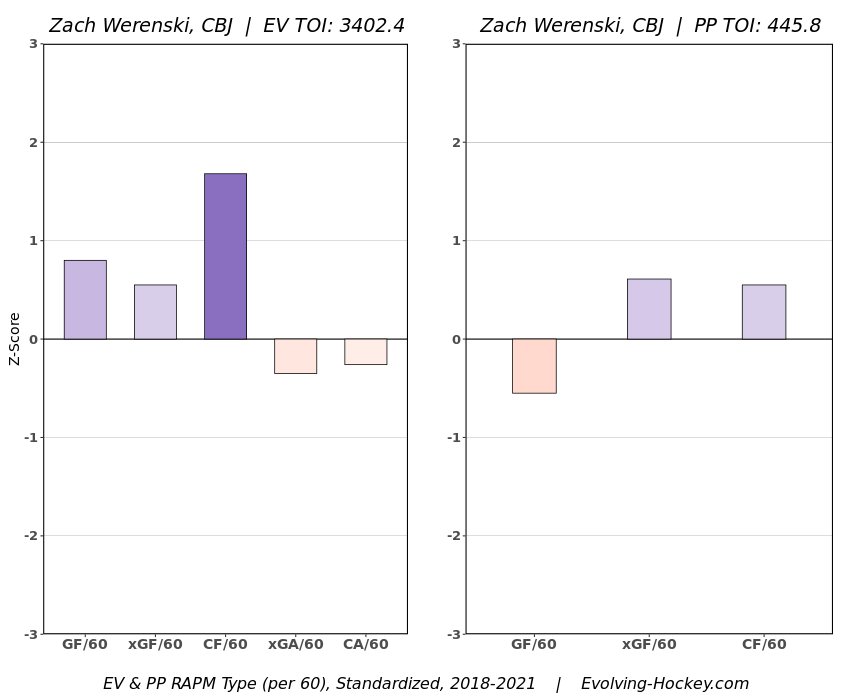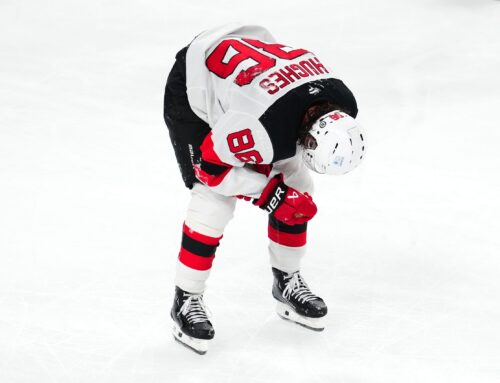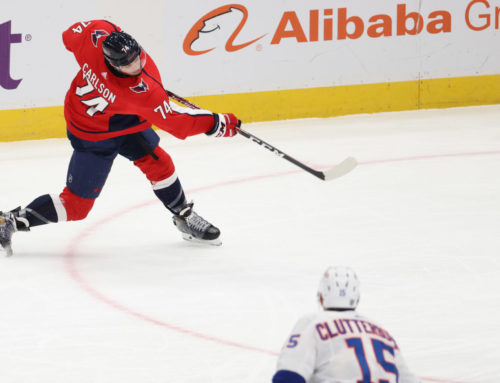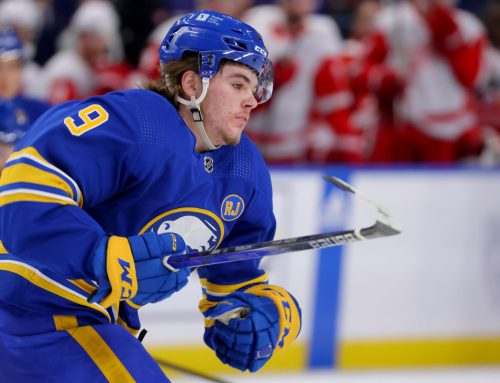This isn't really related to fantasy but it's very good news for Ottawa fans. It appears that a new NHL arena is one the way, in the form of a multi-purpose facility/area. This was announced on Thursday morning in the form of a Memorandum of Understanding:
For anyone unfamiliar with the goings-on here, Ottawa's current facility is about a 20-minute drive out of downtown (in good traffic). This new arena would be downtown by the water, a stone's throw from the Québec border, and maybe 10 blocks from Parliament. It should be easier to attract fans there, which should help their revenues.
There is still a lot to be hashed out here and taxpayers generally get screwed on new sports arenas. This is a necessary step for this specific franchise, though, so for now we'll just count it as a positive. It is Friday, after all.
*
Be sure to head to the Dobber Shop to grab your copy of the 2022 Dobber Hockey Prospects Report! It has all the information that fantasy hockey owners need on current and future prospects for each team in the league.
*
My last few Ramblings have all covered the same topic, that being scoring chance data. We looked at stars like Jack Hughes and Robert Thomas a little over a week ago, moved on to less proven young guns like Seth Jarvis and Dawson Mercer earlier this week, and yesterday we discussed guys at the bottom of our scoring chance data like Anze Kopitar and Anthony Beauvillier. It was an attempt to see who had contributed significantly to their team's scoring chances, who didn't, and what it tells us about their future.
Those Ramblings focused on forwards. As I've stated often, what I like writing about most is defencemen. Maybe we should look at some data we have for defencemen? Yeah, let's do that.
We are going to look at a variety of stats and that will require a variety of sources. A lot of the micro-stats, like zone entries or passing data, will come from Corey Sznajder's Patreon (he tracks games by hand). Other data will be pulled from Natural Stat Trick or our Frozen Tools. Cap information will come from Cap Friendly, and other sources will be referenced when (if) they're used. Good? Great.
It has been a frustrating couple of years for Werenski, health-wise. He missed 21 games in the COVID 2021 campaign and 14 more in 2021-22. All told, that's 25% of games out of the lineup averaging 61 games/82 over the last couple seasons. On top of that, Columbus hasn't been good offensively, finishing in the middle of the pack by goals/60 in that stretch. They might be able to add some punch in the offseason, but the roster they had this season should largely be the same as next season.
Werenski can be a difference-maker for them if he's on the ice, though. In 2021-22, he was about league average in allowing controlled zone entries by the opponent, and similarly league average in limiting chances off those controlled entries. That may not sound like high praise for his defence, but he was well below league average in both regards back in COVID 2021. From Evolving Hockey, that lack of even adequate defence hurt his defensive impacts, leaving him below average from 2018-2021:

Now, the best defence is a good offence, and he's typically been very good offensively. But teams can't spend the entire game in the offensive zone, so being able to limit the opponent at your blue line is a good way to get the puck going back in the offensive direction in a hurry. It's why blue liners that typically limit both opponent entries and chances resulting from those entries – Charlie McAvoy, Adam Fox, Brett Pesce, Devon Toews etc. – can often transition that into offence. It isn't a perfect 1-to-1 as we have guys like Derek Forbort, Esa Lindell, and Kris Russell showing well in this area as well. With that said, it's one indicator of being able to turn defence into offence, and Werenski improved significantly in this regard.
And when the team gets back in the offensive zone, Werenski was very involved. He managed 0.6 high-danger shot assists per 60 minutes, against a league average of 0.17. Players with similar rates include John Carlson, Adam Fox, and Colton Parayko. Not bad company to keep in this regard. The team generated a well-above-average number of high-danger shots as a result, at rates similar to guys like Devon Toews, Roman Josi, and Shea Theodore. Werenski not only improved his defence, but he was able to turn that into a lot of dangerous opportunities for his team. It's hard to ask for much more than that.
The issue that remains is the power play. The team was below average in high-danger passing on the power play, and below average on just setting up off controlled entries. It limited what they could do with the PP, and when you limit your PP options, the playmaking suffers, and the goals are tough to come by. In other words, there were very good reasons why the team was 25th in goals at 5-on-4 in 2021-22.
To me, the Jackets just need more skill up front. We look at teams that got to the Final Four in the playoffs, and it's just a slew of top-end forwards across the board. Aside from perhaps Patrik Laine, they really lack that dynamic offensive potential. Maybe Oliver Bjorkstrand takes another step? There are questions here.
If he can play a full season, there's not much reason to think Werenski won't be a perennial 50-point blue liner. For fantasy, a big issue is multi-cat appeal. I believe he can be a 55-point, 20-PPP guy, but doing so with 100 blocks and 40 hits really mutes his upside. It will depend on league settings as to how valuable he'll really be, but I think Werenski is on the cusp of putting up huge point totals; he's rounding his entire game to enable that. He just needs some help around him.
All told, it was a good fantasy season for Burns. He reached double-digit goals, he had 54 points, he cracked 200 shots, and managed 18 PPPs. Not bad for a 36-year-old defenceman. His issue, as it's been for years, is his defence. The best puck movers from the blue line can not only retrieve the puck in the d-zone, but they can turn that retrieval into controlled zone exits without turning the puck over too often. Guys that excel in this regard are players like Charlie McAvoy, Miro Heiskanen, Devon Toews, Cale Makar, Adam Fox, and the like. Conversely, guys that put up strong zone exit numbers but also turn the puck over are very high-risk, and the names in this regard make sense: Erik Karlsson, Shayne Gostisbehere, Seth Jones, Drew Doughty, and the like. This is where Burns fits in, and that's what makes him a sketchy fantasy asset. He has very high highs, but also very low lows, and any fantasy players with Burns on the roster in plus/minus leagues have felt this keenly for years now. Compounding this problem is Burns gives up the blue line to begin with, as teams generate scoring chances at a well-above-average rate against him. He had similar scoring chances allowed off zone entries to guys like Zach Bogosian, Thomas Chabot, and Rasmus Ristolainen. That is not good. So, not only does he turn the puck over frequently when he's retrieving dump-ins, he gives up a lot of chances off controlled entries to begin with. It's not great.
His bigger issue is that the high highs are starting to dry up. In 2021-22, Burns was below average in high danger shot assists (remember Werenski was well above average), putting him in company like Alex Goligoski and Ryan Suter. As a result of all this, Burns had his worst season driving expected goals for the Sharks since he got there in 2011:

There are two things that keep Burns's fantasy upside afloat, and that's his health and ice time. He hasn't missed a game since 2014 and has skated at least 25 minutes a game in five straight seasons. It's like we discussed yesterday with Anze Kopitar: even if the underlying data is getting worse (and his production-per-minute is suffering as a result), there will still be relevance because of so many games played and so much TOI.
But what happens when that dries up? Burns is going into his age-37 season and the skills are starting to really decline as it is. On the flipside, they really don't have anyone who can fill his role besides Karlsson, and he's had injury issues for years. As long as Burns plays a full season and skates 25 minutes a night, he surely has 50-point upside. It's when that stops happening that the production really come to the forefront.
Cam York
It was just 30 games and York only had 10 points in those games. But it's all we have to work with at the NHL level, so we need to look into his season and see what happened.
First things first: he was great offensively in his limited sample. Individually, he had 2.2 scoring chances per 60 minutes, a rate similar to MacKenzie Weegar and Cale Makar. He also was great at clearing the zone with control, as his successful zone exits (exits with control less failed exits) was among the best in the league, in line with guys like Weegar, Jaccob Slavin, Chabot, and Sam Girard. Not only was he good at getting the puck out of the zone, under control, but he was getting involved offensively when the puck got in the offensive zone.
Further to that, he was very good at retrieving dump-ins and getting the puck out under control. Remember how we talked about Burns constantly turning the puck over? York did not have this issue, from Sznajder's Patreon:

That pack of defencemen he's surrounded by includes Colorado's top pair, Jared Spurgeon, and Fox. In his limited sample, looking at everything from zone exits without turnovers, to retrieving dump-ins, to looking for the net when the puck finally got in the o-zone, it was a very good debut for York.
But that's not where the fun stops. When it came to holding the blue line itself – something Werenski had usually struggled with and something Burns is struggling with now – he excelled again. Teams carried the puck in the zone just 48.1% of the time against York, against a league average of 59.7%. His rate wasn't far off from very good defenders like Aaron Ekblad (48.9%) and Hampus Lindholm (48.2%). There are other lesser defencemen mixed in there, but few of them have similar zone exit and scoring chance data to accompany it. In other words, outside of perhaps some playmaking issues, York was well above average nearly across the board. It was a very impressive rookie season, even if it was just 30 games.
This is where we have to remember he was a highly-touted prospect. He went 14th overall in 2019, but that's not a knock on him. The 2019 draft was loaded at the top with guys like Jack Hughes, Bowen Byram, Dylan Cozens, Trevor Zegras, Kaapo Kakko, Ville Heinola, Cole Caufield, Philip Broberg, Matt Boldy, and so on. The players taken before/after York in that draft include Boldy, Spencer Knight, Caufield, and Alex Newhook, all players that have already reached the NHL in a full-time role. If he goes in the 2018 draft, he’s probably a top-10 pick.
Anyway, it looks as if York might be a cornerstone of the future. Of course, 30 games are nothing to hang any sort of hat on, so we'll have to see how he performs next year. There is still a glut of guys like Ryan Ellis and Ivan Provorov who will take the prime minutes. But I wouldn't be surprised to see him skating 21 minutes a night and driving the offence whenever he's on the ice. He looks like a special player, and I'm excited to see where his future goes.





 TOR
TOR EDM
EDM ANA
ANA PIT
PIT BUF
BUF S.J
S.J MIN
MIN DET
DET CBJ
CBJ UTA
UTA WPG
WPG
